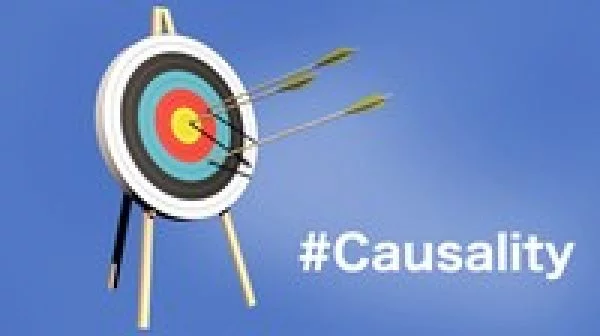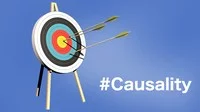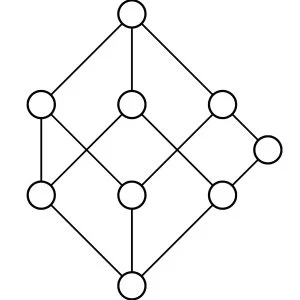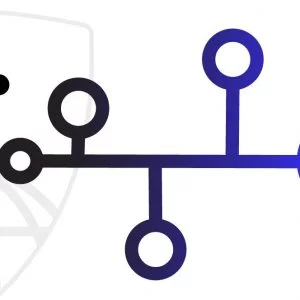
This course offers an introduction into causal data science with directed acyclic graphs (DAG). DAGs combine mathematical graph theory with statistical probability concepts and provide a powerful approach to causal reasoning. Originally developed in the computer science and artificial intelligence field, they recently gained more and more traction also in other scientific disciplines (such as, e.g., machine learning, economics, finance, health sciences, and philosophy). DAGs allow to check the validity of causal statements based on intuitive graphical criteria, that do not require any algebra. In addition, they open up the possibility to completely automatize the causal inference task with the help of special identification algorithms. As an encompassing framework for causal thinking, DAGs are becoming an essential tool for everyone interested in data science and machine learning.
The course provides a good overview of the theoretical advances that have been made in causal data science during the last thirty year. The focus lies on practical applications of the theory and students will be put into the position to apply causal data science methods in their own work. Hands–on examples, discussed in the statistical software package R, will guide through the presented material. There are no particular prerequisites for participating. However, a good working knowledge in probability and basic programming skills are a benefit.
Instructor Details
Courses : 1
Specification: Causal Data Science with Directed Acyclic Graphs
|
10 reviews for Causal Data Science with Directed Acyclic Graphs
Add a review Cancel reply
This site uses Akismet to reduce spam. Learn how your comment data is processed.

| Price | $14.99 |
|---|---|
| Provider | |
| Duration | 5 hours |
| Year | 2020 |
| Level | All |
| Language | English |
| Certificate | Yes |
| Quizzes | No |

$19.99 $14.99






Roope Ohlsbom –
Perhaps a bit surface level for a PhD student, but that was expected based on the course description. The course was very much what the description promised, which is a very good introduction into causal data science with directed acyclic graphs. The examples in R were very useful and instructive.
Marie Jos e Gagn –
Explications tr s claires.
Aac –
Yes
Jaime Daniel Reyes S nchez –
Me agrada. Toca los temas que esperaba. Es claro y conciso.
Vlas Trunov –
Thank you, Paul. This course sets the bar too high for me to reach. I have no doubt you are very profound in the subject, so please take my compliments. This course however does not offer an introduction into causal data science with directed acyclic graphs. First of all, I read the text from the slides faster than you do. In some cases I have to rather read the transcript (let’s assume this is because English is not my natuve language). In other words, I was expecting a more prepared video content. Secondly, in every course that I passed there is a sort of a theme. For example, in the intro to Python you solve tasks as if you follow the movie scenario: you first calculate whether a swallow may lift up an egg, then you do more complicated tasks on cows, etc. I could read an O’Reilly book instead, right? But I chose to follow the course. It doesn’t have to be so basic, as diagrams for dummies, no way, but I would expect it to be more consistent. If you zoomed out on the course earlier, than in the Outro section, it would be more helpful. If you started each block by mentioning its sequence in the whole process, it would be priceless. The focus lies on practical applications. I would admit that, but if you speak variables, that’s just good if it saves time between you as a lecturer and me as a student. After all, we use 2^5 not to say ‘multiply two five times’. But again, is this a foundations course or is this a preparation course for those, who’s already studying the subject? If you start from the case with salaries in Google, then you leap to equations and then you end up with an R code or references to the literature, I kind of lose narrative thread (which is very important when you deal with causes and sequences). Here’s the start of a lecture, after which I just fast forwarded: Recovering from Selection Bias Here’s an important theorem that tells us how we can recover conditional distributions from selection bias data the conditional distribution p of Y given t is recoverable from the selection diagram g. S if and only if the selection indicator s can be d separated from Y given a set of notes t if that is the case the conditional distribution p of Y T is equal to the distribution p of Y given T and S equal to one. I was tempted to take the course because there is R mentioned in the outline and I took an intro course on DAGs at edx. And R part is, perhaps, the best part of the couse. If instead of screencasting you attached an ipynb and explained the problem, I could do my homework and come back to answer the questions of a test. Isn’t that just fun? But as of yet you wouldn’t give me a grade higher than the average. I’ll come around when I’m done with my textbooks.
Hermann Angoua –
Le cours est tr s clair et bien expliqu . Je suis de plus en plus clair sur l usage du do calculus en conomie.
Claudiu Papasteri –
Having done dozens of courses on Udemy (especially on data science/statistics using R/Matlab/Python) I have to say this course is brilliant. It is exceptionally structured, it provides an original blend of the most useful information in the field, and is both friendly and fairly technical. It provides exciting real world scenarios and interpretations. Every topic is demonstrated in R throughout simulation studies that prove the concept. The length of the course is very deceptive, it took me several times longer than the cumulated length of the videos even while not taking into account all the reading material. It is a undoubtedly 5/5 course. My only wish would be for Paul to do more courses on the topic and add examples of using DAGs on real world data.
Dennis Gisseldahl –
Pretty good, yet more prior knowledge in designing experiments and statistics would have been useful for understanding more.
Bharat Desai –
Examples are sometimes not intuitive. Would prefer if the first example is a straightforward/easy example and then something that requires a bit more inference. Nevertheless, the course was comprehensive and gave me a great introduction to the world of causal data science. I still have a lot of hardwork to do before i become familiar with this topic though.
Abdul Ahmed –
Excellent material and excellent instructor.